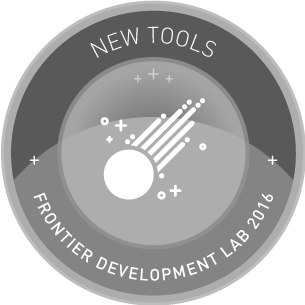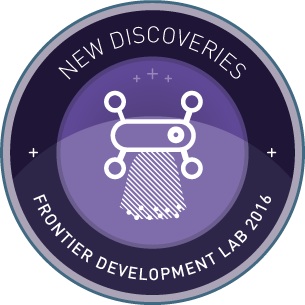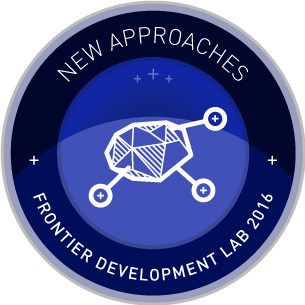
FDL 2016
FDL.AI 1.0 was the initial six-week FDL conducted at NASA's Ames Research Center and the SETI Institute campus. Three teams studied meteorite hunting, deflector selector and asteroid shape modeling.
Navigate to research area
ASTEROID SHAPE MODELING
PRODUCTION OF 3D MODELS OF POTENTIALLY HAZARDOUS ASTEROIDS FOR BETTER ASSESSMENT OF THEIR ORBITS AND CENTER OF MASS
VAEs & Bayesian optimization were used to simultaneously shape model and establish spin axis — achieving greater accuracy in a fraction of the time than human experts, enabling a rapid understanding of the shape of an asteroid while it is still being tracked by radar.
METEORITE HUNTING DRONE
TO HELP IN THE CHALLENGE OF FINDING FRESH METEORITES, THE FDL.AI TEAM DESIGNED A METEORITE HUNTING DRONE TO ASSIST IN THE FIELD.
To train the drone, the team incorporated six deep learning models based on a library of 25,000 meteorite images, along with a 15 million image library of ‘everything else’, all driven by a user-friendly app for use by researchers around the world.
-
Meteorite Discovery using Unmanned Aerial Vehicles and Convolutional Neural Networks
Researchers: Sravanthi Sinha, Christopher Watkins, Robert Citron, Amar Shah;
Mentor: Peter Jenniskens -
Recovery of Meteorites Using an Autonomous Drone and Machine Learning - DOI
Authors: Robert I. CITRON, Peter JENNISKENS, Christopher WATKINS, Sravanthi SINHA, Amar SHAH, Chedy RAISSI, Hadrien DEVILLEPOIX, Jim ALBERS2
-
Lunar and Planetary Science 2017 - Meteorite recovery using an autonomous drone and machine learning
Authors: Robert I. CITRON, Peter JENNISKENS, Christopher WATKINS, Sravanthi SINHA, Amar SHAH, Chedy RAISSI, Hadrien DEVILLEPOIX, Jim ALBERS2
ASTEROID “DEFLECTOR SELECTOR” DECISION SUPPORT
ASSESSMENT OF THE MOST EFFECTIVE DEFLECTION STRATEGIES FOR MOVING A POTENTIALLY HAZARDOUS ASTEROID ON COLLISION WITH A TOWN OR CITY ON EARTH
The FDL.AI team built a decision support tool that uses machine learning to analyze the effects of 1.5 million simulated deflection campaigns to determine which methods are the most effective.
The Deflector Selector enables strategic decisions on deflection technologies to prioritize, and what asteroid characteristics are the most important to know in advance of taking action.
-
The Deflector Selector: A Machine Learning Framework for Prioritizing Hazardous Object Deflection Technology Development
Researchers: Erika Nesvold, Adam Greenberg, Elmarie Van Heerden, Nicolas Erasmus
Mentors: Franck Marchis, J.L. Galache



















